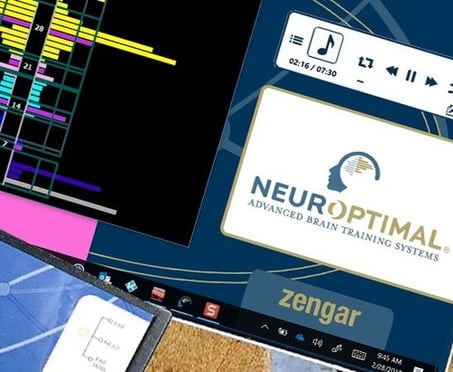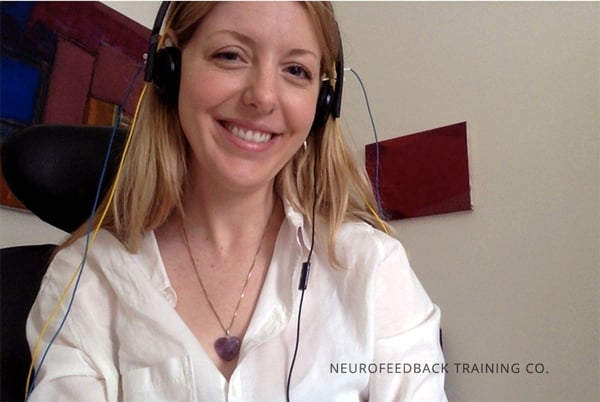Where to find Neurofeedback Near Me - NeurOptimal At Home
Where to get the best neurofeedback training in Seattle, WA, Oregon, or Utah? Rent the professional-grade NeurOptimal home system and save on cost.
As the lead provider in NeurOptimal neurofeedback training home system rentals we have years of experience helping clients optimize their results.
 Since 2011, we have helped thousands of individuals and families get the best possible results from NeurOptimal® neurofeedback. We understand that investing in your health requires research and consideration. Before you embark on this transformational journey, whether it is for yourself or your children, read our tips on how to get the most benefit from neurofeedback. We dispel myths and give you scientifically-backed information about how to get the most out of your training. Here are our recommended dos and don'ts for best results.
Since 2011, we have helped thousands of individuals and families get the best possible results from NeurOptimal® neurofeedback. We understand that investing in your health requires research and consideration. Before you embark on this transformational journey, whether it is for yourself or your children, read our tips on how to get the most benefit from neurofeedback. We dispel myths and give you scientifically-backed information about how to get the most out of your training. Here are our recommended dos and don'ts for best results.
In 2011, we added neurofeedback to our therapy practice in NYC. We spent six months researching different equipment to find the system that would give us the best results at a cost our clients could afford. We spoke with neurofeedback trainers who had been working for years in the field and chose the NeurOptimal® system in our neurofeedback center for four reasons:

After deciding on the NeurOptimal® device, we tried it for ourselves and spoke with clients who had trained successfully with a variety of goals. That was over eight years ago, and we have been so impressed with NeurOptimal® that we went from having one system to 50 in our offices and in our national rental program.
Whether you are training for cognitive performance (mental acuity, focus, and executive functioning), peak performance in sports, sleep management, or emotional fitness and mood regulation, the same general recommendations will improve your success.
NeurOptimal® equipment is designed to help improve overall brain function, so the same tips work regardless of a client's specific goals. When you support your brain's ability to optimize its performance in any category-- such as mood, cognitive abilities, sleep management, focus, and creative flow--you are automatically going to have a positive impact on your specific goals.

The brain is learning how to operate differently and just like when we learn anything else, consistency leads to the fastest results. Just like learning anything new, if you practice neurofeedback on a consistent schedule, you will see results more quickly than if you do it randomly or with large gaps in between repetitions. Put yourself on a schedule and stick to it while you are training your brain.
The main reason people don't see benefits from neurofeedback is because they either don't train consistently enough or they stop prematurely. Our main role as neurofeedback trainers is to get clients started and to keep them training. We don't worry about whether the neurofeedback is working. So long as they have a good hook-up with the sensors collecting the brain's electrical activity, which is easy to know, the training is going to have an impact. Brain training, as well as developing a healthier lifestyle, will reset bad habits and generate calm, focus, energy, and even joy!
Also Read
How to get best results from neurofeedback - Consistency is key!
When you track your results, you can see the benefits more clearly and it inspires you to keep training. Fill out our self-reporting checklist every 10 sessions. Part of success comes from building your awareness about what is shifting and what is still stuck. Using the checklist is a support for creating greater mindfulness. Some of the changes will come from you actively making better decisions and some will be seamless and not in your conscious awareness. Filling out our broad-ranging checklist helps you see the ones you didn't expect!
 The checklist also helps you identify areas in your life that need extra support. If you are experiencing negative thoughts, the item on the checklist "Think others are against me" may continue to be an 8 out of a 10. If it hasn't shifted after the first 10 sessions, becoming aware of that rigidity gives you an opportunity to examine what other supports might help.
The checklist also helps you identify areas in your life that need extra support. If you are experiencing negative thoughts, the item on the checklist "Think others are against me" may continue to be an 8 out of a 10. If it hasn't shifted after the first 10 sessions, becoming aware of that rigidity gives you an opportunity to examine what other supports might help.
Journaling about the negative thoughts, and then asking the question, "Is this true and factually based?" helps us manage our negative thoughts. Neurofeedback trains our brains to respond to real-time information and helps us notice when thoughts are based on habit, rather than fact.
Prepare yourself for benefits by shifting your attitude away from focusing on problems and begin to ready yourself to notice and believe in the shifts you want to happen. The placebo effect is real, so let's use it to boost your results. Research shows that the part of the brain connected with our beliefs is also connected with the pleasure/reward center.  Boost your results by believing in what you are doing engages the part of the brain that you consciously control: the pre-frontal cortex. People who come in saying: "I'm ready to not be anxious when I drive" or "I'm ready to enjoy my life" consistently see results faster.
Boost your results by believing in what you are doing engages the part of the brain that you consciously control: the pre-frontal cortex. People who come in saying: "I'm ready to not be anxious when I drive" or "I'm ready to enjoy my life" consistently see results faster.
Elizabeth's Story how it "changed my life"
 Add brain-healthy foods to your diet. The brain can't change if it doesn't have the building blocks. You can't build a highway without asphalt! The brain is composed of 60% fat. Getting the essential fatty acids is, well, essential! Eat more omega 3 fatty acids and green leafy vegetables. And decrease foods that create inflammation, as these prevent the brain from shifting into calm states. Foods such as caffeine, sugar, white breads and starches, and processed foods should be limited.
Add brain-healthy foods to your diet. The brain can't change if it doesn't have the building blocks. You can't build a highway without asphalt! The brain is composed of 60% fat. Getting the essential fatty acids is, well, essential! Eat more omega 3 fatty acids and green leafy vegetables. And decrease foods that create inflammation, as these prevent the brain from shifting into calm states. Foods such as caffeine, sugar, white breads and starches, and processed foods should be limited.
There is a growing body of research that shows that the gut is an integral part of brain health. So much so that it's now referred to as "the second brain."
Many of the building blocks of healthy brain functioning, such as the neurotransmitter serotonin, is made in the gut. They have also discovered that the communication between the brain and the gut is much more about the gut speaking to the brain, rather than the brain giving the gut commands.
One example of the power of the gut's communication to the brain is studies showing that if there is an overgrowth of sugar-eating bacteria in the gut, those systems send a greater frequency of signals to the brain's hunger center to eat more sugar than those individuals that have lower levels of that bacteria.
If you're looking for an overall guide to how to eat better for brain health. Dr. Mark Hyman, president of the Institute of Functional Medicine, and New York Times best selling author, has redesigned the food pyramid with the latest understanding of brain health and overall wellness.
How Gut Bacteria Tell Their Hosts What to Eat
In 1949, when scientists were first coming to understand how the brain communicates through electrical impulses moving along neurons, a saying was coined that captures what happens when the brain learns: neurons that fire together, wire together. We have found this saying to also be true when it comes to family members brain training together: families that train together, see results together!
When children receive neurofeedback sessions, families report seeing the benefits more quickly and rate better results than parents who do not do sessions. Nervous systems in a family are connected to each other. If an alpha nervous system (i.e. a parent) trains, then the beta nervous system (i.e. the child) will have faster and longer-lasting results. Read more here
 This principle is also true for couples. When one partner is brain training with neurofeedback, they are actively working on shifting out of a stress response. That habitual response to stress can look like worrying, being speedy, focusing on problems, collapsing, and feeling hopeless or down. When the system starts to regulate, the benefits from neurofeedback look like: finding calm, being open, and feeling less angry, less worried, more uplifted, more playful, and engaging creatively.
This principle is also true for couples. When one partner is brain training with neurofeedback, they are actively working on shifting out of a stress response. That habitual response to stress can look like worrying, being speedy, focusing on problems, collapsing, and feeling hopeless or down. When the system starts to regulate, the benefits from neurofeedback look like: finding calm, being open, and feeling less angry, less worried, more uplifted, more playful, and engaging creatively.
If one partner is in the stress habit and the other is shifting out of it, they are going to have some disharmony which will need to be managed. When they are both shifting out of their habitual stress reactions, they can support the changes rather than have one person feel threatened or try to convince the other to go back to the old habitual dynamics between them.
When couples do neurofeedback together, like with parents and their children, they report training for longer and feeling more connected to each other. Communication styles often organically shift from emotionally reactive, to more peaceful and caring responses.
What are the best conditions for getting the benefits from neurofeedback? Do it when you have the time to train regularly and consistently, train with the people you love, try to eat a whole foods diet, stay away from sugars, and believe that you can reset your old emotional and mental habits, even if it feels like you can't! We see people transform their lives every day with neurofeedback.
Natalie Baker has over 25 years of experience as a licensed psychotherapist and has been a NeurOptimal® neurofeedback trainer since 2011. She is the founder of Neurofeedback Training Co., which offers in-person sessions and runs the largest nationwide home rental program for NeurOptimal systems. Natalie also teaches meditation and Buddhist psychology and specializes in working with anxiety, stress, ADHD, and trauma.
Where to get the best neurofeedback training in Seattle, WA, Oregon, or Utah? Rent the professional-grade NeurOptimal home system and save on cost.
How home neurofeedback works, explore the best neurofeedback device for home use, and learn if you can do neurofeedback at home safely with rentals...
Read this Neuroptimal neurofeedback review to learn how it helped train the author's brain and others. Start optimizing your brain today!
Be the first to know about new blogs